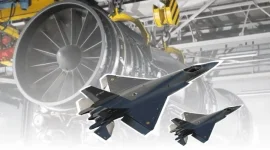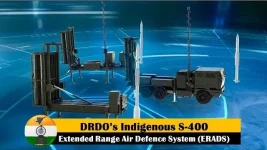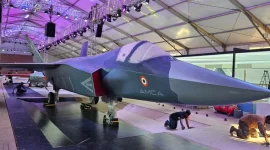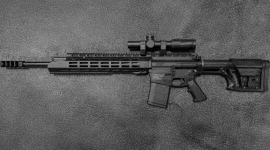- Views: 1K
- Replies: 13
A dedicated high-level committee, under the leadership of Defence Secretary Rajesh Kumar Singh, is urgently working to define a production strategy for India's indigenous Advanced Medium Combat Aircraft (AMCA).
The committee aims to finalize its report by the end of April 2025. This plan is crucial for overcoming financial and logistical hurdles, thereby speeding up the development and eventual delivery of this 5.5-generation stealth fighter jet to the Indian Air Force (IAF).
The AMCA program represents a significant step in India's goal of achieving self-reliance in defence technology and manufacturing.
Developed by the Aeronautical Development Agency (ADA) within the DRDO, the aircraft is designed with advanced features like stealth technology, the ability to cruise at supersonic speeds without afterburners (supercruise), and sophisticated electronic systems.
These capabilities are intended to give the IAF a decisive advantage in the evolving security landscape. However, the substantial costs involved in creating such an advanced fighter necessitate an innovative and efficient production plan.
To tackle this challenge, the government has formed a specialist committee featuring senior figures from India's defence establishment. Besides Defence Secretary Singh, the panel includes the Vice Chief of the Air Staff, Air Marshal S.P. Dharkar, the Secretary of Defence Production, Mr. Sanjeev Kumar, and key officials from ADA and DRDO. This composition ensures a mix of operational, industrial, and technical knowledge is applied to formulate a workable production model.
Developing a Practical Production Strategy
The committee's main goal is to recommend a production method that not only accelerates the AMCA's entry into service but is also financially sustainable over the long term. Several key approaches are reportedly under consideration:- Public-Private Partnership (PPP) through a Special Purpose Vehicle (SPV): A major consideration is creating an SPV, a dedicated entity where private sector companies would partner with the state-owned Hindustan Aeronautics Limited (HAL). This model seeks to tap into the private sector's agility, investment potential, and efficiency to boost production capacity and potentially lower costs. Such a move could also foster a broader aerospace manufacturing ecosystem within India.
- Achieving Economies of Scale: To improve cost-effectiveness, the committee might recommend increasing the total number of aircraft ordered beyond the initial plan for around 100 jets (roughly five squadrons). Manufacturing a larger batch usually reduces the cost per aircraft, making the program more affordable and potentially opening doors for future exports.
- Strengthening the Domestic Supply Chain: In line with the national 'Atmanirbhar Bharat' (self-reliant India) initiative, the panel is exploring ways to develop a strong network of Indian suppliers for AMCA components. This involves encouraging participation from small and medium-sized enterprises (SMEs) to build local capabilities and reduce dependence on foreign parts.
- Selective International Cooperation: While the focus is on indigenous development, the committee may consider strategic partnerships with international technology firms for specific high-tech systems, like advanced engines or sensors, ensuring rapid access to cutting-edge technology without compromising the goal of self-reliance.
The first AMCA units are anticipated to join the IAF fleet starting in the mid-2030s. Establishing a clear and effective production roadmap now is vital to prevent delays that could affect the IAF's overall modernization schedule.
The expertise within the committee is well-aligned to this task. Air Marshal Dharkar provides direct input on the IAF's operational needs, Mr. Sanjeev Kumar brings experience in managing large-scale defence production, while ADA and DRDO representatives ensure the plan supports the complex technology and design of the AMCA.






